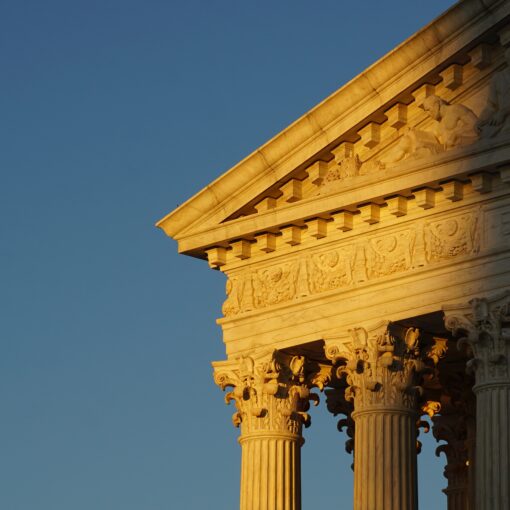By Matt Wisnieff
The energy efficiency provisions of the Kerry-Lieberman (KL) bill are presented in Title I—“Domestic Clean Energy Development.” The relevant sections are contained within Subtitle D, and Subtitle E, Parts I-III, beginning on page 187. Additionally, parts of Subtitle D amend the Consolidated Farm and Rural Development Act (CFRDA). The KL bill lays out its policy objectives in § 1601 of Subtitle D, focusing on improved energy security; the reduction of greenhouse gas pollution; and the creation of jobs. Generally, the bill aims to accomplish these objectives through the distribution of emission allowances to entities and states working toward renewable energy and energy-efficient construction and infrastructure.
I. Energy Efficiency Subsidies
a. Rural Energy Savings Program
KL establishes a system for providing loans to private and state entities for improving energy efficient buildings and practices in rural areas. The primary goal of the “Rural Energy Savings Program” is job creation. Under the Program, rural utility entities, which may include a “public power district” or “public utility district,” or any “similar entity,” may become eligible under KL to receive Federal loans for the purpose of implementing energy efficient measures. (§ 1602, amending the CFRDA to include § 366(a-b)) Generally, KL defines “energy efficiency” as a program that “meets the total resource cost test.” (§ 1603(a)(2)) The total resource cost test measures the net economic benefits of the program against its net costs, including supply and delivery costs, and deferred or avoided investments, as well as those incremental costs borne by the energy consumer.
Under the Program, the Secretary of Agriculture, acting through the Rural Utilities Service, is authorized under § 366(d) to make loans to eligible entities “that agree to use the loan funds to make loans to qualified consumers.” As a condition of receiving a loan, an eligible entity must establish a plan to implement energy efficient measures, and to decrease energy use among its consumers. (CFRDA § 366(d)(2)(A)) The energy efficient measures § 366 seeks to promote are “structural improvements and investments in cost-effective, commercial off-the-shelf technologies to reduce home energy use.” (§ 366(b)(2)) Eligible entities are required to establish a list, prepare a plan, and provide for appropriate measurement and verification. (CFRDA § 366(d)(2)(A)(i-iii)) KL establishes that these loans are to be interest-free (§ 366(d)(3)) and repaid within ten years. (§ 366(d)(4))
Qualified consumers are eligible to receive loans from eligible entities, using loan funds received from the Secretary, to promote energy efficient practices under KL. These loans may bear no interest in excess of 3%, which is to be used to establish a loan loss reserve and to defray administrative costs of the KL program. The loan itself is to be repaid through charges added to qualified consumers’ normal electricity bills. Furthermore, the loans must be used to promote energy efficient practices in any manufactured structure, real property, or fixture thereof. (§ 366(e))
All qualified entities are also to enter into a contract with the United States Department of Agriculture to measure and verify the efficacy of energy efficiency programs funded by federal loans and to provide technical training and assistance to “employees of eligible entities to carry out [§ 366].” (§ 366(f))
Finally, beginning not later than September 30, from 2012 to 2015, the Administrator of the EPA is also to distribute allowances in accordance with § 781(c)(5)(B) of the Clean Air Act for the purpose of promoting energy efficient practices. (CFRDA § 366(c)) Under § 781, 0.5% of total emission allowances are made available to the Administrator for the purpose of carrying out the Rural Energy Savings Program, which includes allowances available for distribution to state entities.
b. Allowance Distribution to States to Fund Energy-Efficiency Practices
Under § 1602(b), the Administrator is to begin distributing emission allowances to states beginning not later than September 30, 2012, and continuing annually until 2021. Under § 1602(b)(4), one-third of the allowances to be distributed to the states are to be divided equally between the states, another one-third are to be distributed proportionately to each state according to population, and the final one-third of allowances is to be distributed proportionately to each state according to energy consumption. The allowances are to be used exclusively for the purpose of promoting renewable energy as well as energy efficiency practices, which include: (1) building codes that improve energy efficiency; (2) energy-efficient manufactured homes; (3) building energy performance labeling; (4) low-income community energy efficiency improvements; (5) and energy-efficient retrofits of existing buildings. Furthermore, existing state energy-efficiency programs are to be prioritized over new ones. (§ 1602(d)(1))
To enforce these provisions, KL enables the Administrator of the EPA to withhold up to twice the number of allowances that a State failed to use appropriately that a State would otherwise be eligible to receive in future years. (§ 1602(f))
c. Research
KL Subtitle F, § 1801 pledges support to research initiatives that “enhance the economic, energy, and environmental security of the United States” by reducing imports of energy from foreign sources, reducing energy-related pollution, including greenhouse gas emissions, and improving U.S. energy efficiency in one or more economic sectors. (§ 1801(a)(1))
Under § 1801(c)(1), emission allowances are to be distributed “on a competitive basis” to institutions of higher education, companies, research foundations, trade and industry research collaborations, and consortia of such entities, starting not later than September 30, 2012 and continuing until 2049. The goal of this program is to promote the development and deployment of clean energy technologies, which the bill describes as technology that (1) produces energy from renewable energy sources or from nuclear power; (2) more efficiently transmits, distributes, or stores energy, or reduces emissions or pollution; (3) enhances energy efficiency for buildings or industry in a manufacturing process; (4) enables the development of the “Smart Grid” program; (5) produces a sustainable material with energy efficient applications; (6) enhances water management, conservation, distribution or end use applications; and (7) improves energy efficiency for transportation.
Finally, under KL Subtitle B, § 2101, the Clean Air Act is amended to include § 781(c)(5)(A), which allocates 2.5% of emission allowances to aid the development of clean energy and renewable energy technologies starting in 2013. This amount is to decline to 2% by 2016, to 1% in 2019, and finally to 0.5% in 2021.
II. Fixtures and Appliances
Under KL Subtitle C, Part I, § 2201, the Clean Air Act is amended to include § 619(n)(C), which permits the Secretary of Energy and the Administrator of the EPA to use federal funds under the Climate Protection Fund to carry out a “Best-in-Class Appliances Deployment Program.” This program aims to provide bonus payments to retailers and distributors of high-efficiency household appliance models, building equipment, and consumer electronics for their distribution, replacement and development. (§ 619)(n)(C)(i-iii) KL does not define what standards must be met by a “best-in-class” appliance.
III. Comparison with Waxman-Markey (WM)
KL and WM seem to pull in opposite directions on the issue of energy efficiency. Where KL provides for the distribution of emission allowances to support energy efficiency, renewable energy, and clean energy research, WM only touches upon the issue of allowances for energy efficiency and renewable energy. On the other hand, where WM provides for a national building code to promote energy efficiency in residential and commercial buildings and lighting and appliance energy efficiency, KL only provides for a program of subsidizing appliance upgrades that increase energy efficiency without providing for a national green building code.
Where KL relies almost solely on the distribution of emission allowances to state and local entities promoting clean energy research and efficiency, the WM bill provides for the distribution of emission allowances for energy efficiency and renewable energy in addition to implementing energy efficient building codes and appliance standards. Under WM Title III, Subtitle B, § 321 of WM, the Clean Air Act is amended to include Part H, § 781(f), which provides for the distribution of between 9.5 and 4.5% of emission allowances to eligible entities for the purpose of energy efficiency and renewable energy. Under § 781(f), from 2012 to 2015, 9.5% of allowances are to be distributed. For 2016 and 2017, this number will decrease to 6.5%. From 2018 to 2021, 5.5% of allowances will be distributed. From 2022 through 2025, between 1 and 4.55% of allowances may be distributed to the energy efficiency and renewable energy sector. From 2026 through 2050, 4.5% of allowances are to be distributed.
Under WM Title II, Subtitle A, § 201, the Energy Conservation and Production Act is amended to include § 304, which establishes energy efficiency targets for buildings. The WM targets are, for residential buildings, a 50% reduction in energy use relative to WM’s baseline by January 1, 2014, with additional 5% reductions for January 1, 2017 and, for every three years through January 1, 2029. For commercial buildings, a 50% reduction is to be met by January 1, 2015, with additional 5% reductions for January 1, 2018 and, for every three years through January 1, 2030. KL does not provide for national green building standards.
Also under Title II, under Subtitle B, § 211 of WM, national standards for outdoor lighting equipment are set. These standards include specific minimum light efficiencies and variable lighting levels for different types of outdoor lamps, in order to produce the most energy efficient outdoor lighting scheme. KL does not contain any similar provisions on lighting, however, does establish a program for subsidizing energy efficient upgrades of appliances, generally, according to a “best-in-class” standard specific to each appliance type and model.



